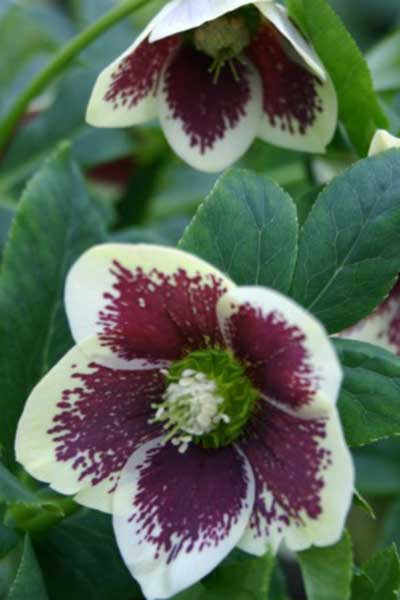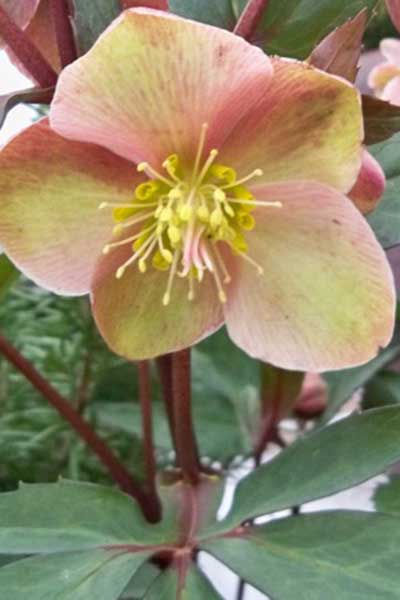Hellebore 'Shooting Star'
- Scientific Name: Hellebore ericsmithy
- Garden: Wildlife Garden
- Plant Type: Helleborus x ericsmithii 'coseh 790'
- Evergreen/Deciduous: Evergreen
- Sun/Shade Exposure: Part Shade to Full Shade
- Moisture Requirements: Moist, well-drained
Plant Information
Culture: Most prefer woodland conditions with deep, fertile, humus-rich, well-drained soil and dappled shade. Helleborus can tolerate a wide range of soil conditions as long as plants have good drainage.
Maintenance: Heleborus x hybridus appreciate a yearly application of fertilizer in late winter to early spring. Top dress around the plant with compost or well rotted manure in early winter, but keep clear of the crown to prevent rot. Many authorities recommend removing old leaves to maintain a tidy appearance.
When flower stems are 3-4 inches tall cut off all the old leaves. This will enhance flower display and reduce the spread of disease year to year. When flower stems die back they may be removed as well. Seedlings that appear around the base of plants may be left if not overcrowded. Otherwise pot them up or move them in spring.
When plants are well established, or if they become congested, they may be divided. The best time to do this is late summer or early fall, when active growth has slowed. Be aware that recently divided plants may take a year to reestablish, and thus may not flower the following spring.
Garden Use: The fact that they bloom in late winter when everything else looks dead or conspicuously absent makes them the stars of the winter shade border. They are excellent companions for hostas, woodland flowers, ferns, and other shade-loving plants.
They are also deer resistant and somewhat drought tolerant once established. Being mostly evergreen, their large textured, dramatic leaves provide structure and color year-round. Combine all these desirable qualities with overall toughness and you get a stellar perennial worthy of inclusion in every garden.
Pest and Disease: Helleborus have few problems with disease but they are susceptible to black fungal rot. Keep an eye out for aphids. Slugs and snails are also known to attack young growth. Bait with Sluggo before damage becomes apparent.
Data Source
https://portlandnursery.comPlant Photos







